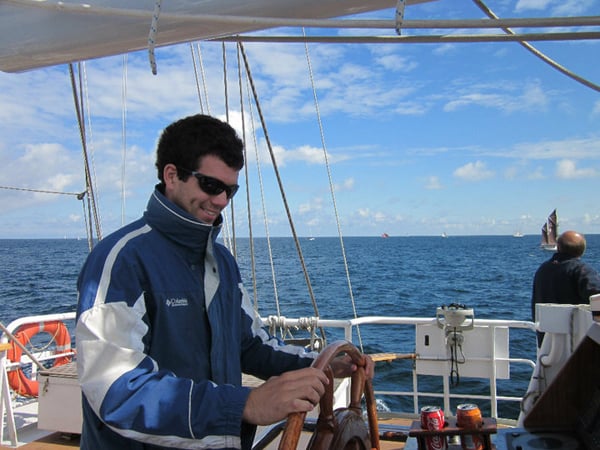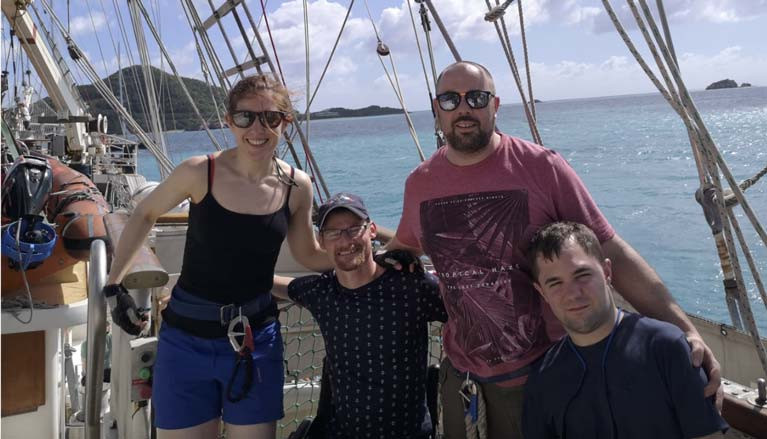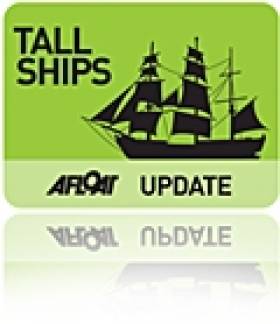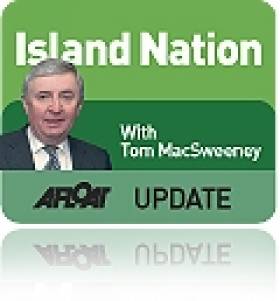Displaying items by tag: Tenacious
Marine Industry News reports that the Jubilee Sailing Trust (Tenacious) Ltd has closed and its assets, including the tall ship Tenacious, will pass into receivership.
It follows the auction earlier this year of the JST’s former flagship tall ship Lord Nelson after the troubled charity was placed into administration in August 2022. The ship was not sold as there were no buyers.
While the Jubilee Sailing Trust charity remains active as a separate entity, it faces the prospect of a Charity Commission as to whether it too can continue.
As previously reported on Afloat.ie, Tenacious is not only the largest wooden tall ship of her kind in the world but also has access throughout for people with various disabilities.
However, as the statement announcing the closure says: “Unfortunately neither our voyage sales nor our fundraising efforts have been successful in meeting the circa £150k/month required to operate Tenacious and keep her legally compliant to deliver our voyages, nor to repay the historic debt (circa £477k) accumulated prior to the September 2022 change in strategy.”
Marine Industry News has more on the story HERE.
This story was updated on 19 December to clarify that the tall ship Lord Nelson was not sold in its 2022 auction.
Cork Sailors Onboard Sail Training Ship Tenacious in the West Indies
Two Cork Software employees are onboard the Sail Training Tall Ship Tenacious in the West Indies this week as part of a volunteer programme to give people of mixed abilities and circumstances the freedom to explore their ability, potential and place in the world through inclusive adventures at sea.
Mike Oughton and Aileen Kelleher, who work for International firm VMware based in Ballincollig Cork, are sailing from Antigua to Anguilla in the fourth year of a partnership between the company and the Jubilee Sailing Trust charity.
Tenacious is the largest wooden tall ship of her kind in the world. The ship has access throughout for disabled crew, including wheelchair users, with flat wide decks and powered lifts. There is a speaking compass for the use of blind crew members and bright track radar for the partially sighted crew. An induction loop and vibrator alarms have been installed for hard of hearing crew members.
Entry List Announced for Tall Ships Races 2012
#TALL SHIPS - Eighteen vessels are on the entry list for the 2012 Tall Ships Races which are set to conclude in Dublin Port next August.
The list is dominated by British entries, with all nine UK tall ships expected to sail the third and final leg from A Coruña in northern Spain to Dublin.
Tall ships from Russia, Poland, France, Ecuador, Bulgaria, Latvia, Estonia and Belgium will also be in the fray when Ireland's capital hosts the final port of call for the 2012 races, presented by Szczecin in Poland and organised by Sail Training International - a charity established to harness sail training to develop and educate young people regardless of nationality, culture, religion, gender or social background.
The first leg of the 2012 races kicks off in Saint-Malo, France on 7 July with ships racing to Lisbon in Portugal (till 21 July); Cádiz in southern Spain (21-28 July) and A Coruña (28 July-12 August) before the final leg.
Dublin will be hosting the Tall Ships Races for the first time since 1998. Earlier this year Eamonn O’Reilly, CEO of Dublin Port Company, said he was “delighted to welcome the Tall Ships Races to Dublin Port" in 2012.
Since the announcement the port has already played host to the British tall ship Tenacious and the Norwegian vessel S/S Statsraad Lehmkuhl.
From Thursday 23 to Sunday 26 August 2012 as many as 100 ships are expected to arrive in the port and Docklands area for an event that includes a four-day festival programme of music, food and fashion showcases, markets, street theatre, water sport and water-based activities.
The weekend will also feature activities unique to the races including a crew parade, prize-giving event and a parade of sail.
Are you looking to get involved in Dublin's hosting of the Tall Ships Races? Check out the following links:
Become a trainee www.dublintallships.ie/trainees/
Take part as a volunteer www.dublintallships.ie/volunteers/
For further information see www.dublintallships.ie or e-mail [email protected]
Entry List for the Tall Ships Races 2012:
Akela (Russia)
Black Diamond Of Durham (UK)
Dar Mlodziezy (Poland)
Etoile Polaire (France)
Guayas (Ecuador)
Johanna Lucretia (UK)
John Laing (UK)
Kaliakra (Bulgaria)
Lord Nelson (UK)
Maybe (UK)
Moosk (UK)
Pelican Of London (UK)
Pogoria (Poland)
Rona II (UK)
Spaniel (Latvia)
St Iv (Estonia)
Thermopylae Clipper (UK)
Tomidi (Belgium)
Tenacious Pays a Visit to Dublin
The British Tall Ship Tenacious that sheltered from the storm force winds in Dun Laoghaire at the weekened is in Dublin Port until later today. The Tenacious is one of two Tall Ships in the world designed to offer people of all abilities the opportunity to become a sail trainee. Its sister ship The Lord Nelson is the first Class A vessel to sign up for the final leg of The Tall Ships Races 2012 from La Coruna to Dublin.
Dublin will become the final port of call for The Tall Ships Races 2012 presented by Szczecin and organised by Sail Training International, a charity established to harness sail training to develop and educate young people, regardless of nationality, culture, religion, gender or social background.

On the bow - Stuart Sheldon, Bosun’s Mate of the British Tall Ship the Tenacious, is pictured carrying out checks as the ship is docked on Sir John Rodgerson’s Quay Dublin. Photo: Andreas/Poveda/Jason Clarke Photography
Could Waterford Lead a Tall Ships Revival?
I am aware that a number of groups are examining the possibility of launching a national sail training programme. I wonder if Waterford could be the place to lead it and be the base for national sail training. The marine sector suffers from the neglect and disregard of a disinterested Government so any revival will have to be outside of State support.
Waterford staged a hugely successful visit of the Tall Ships Race in 2005 and has been honoured with the hosting of the Race start next year. Bertie Ahern as Taoiseach snubbed the Race visit in 2005. It showed how little respect he had for the maritime sector. Half-a-million people visited the city, but Bertie couldn't be bothered to do so.
The city has been encouraging young people to get experience of crewing aboard Tall Ships. Twenty-year-old David Murray, a business information systems student at University College Cork, is becoming a sail training "veteran" through experience gained over the past two years.
He first 'shipped out' last year aboard the Tenacious operated by the Jubilee Sailing Trust of the UK, a registered charity which also operates the Lord Nelson. His first voyage, following which he sailed the north coast of Scotland on the Lord Nelson and this year became a Bosun's Mate, taking more responsibility aboard the Nelson on a voyage from Southampton to Glasgow. Then he joined the Dutch three-masted schooner, Eendracht, from Kristiansand in Norway to Hartlepool in the UK, where he disembarked and re-joined the Tenacious, again as Bosun's Mate, sailing to Bruges in Belgium and onto London. A few days later he was back aboard the Lord Nelson as Bosun's Mate from Falmouth to Milford Haven in Wales and then to Waterford, from where the Tall Ships Race will start next year,
"It's been a brilliant experience. I've met a great mix of people. Sail training is for everyone," he said. "It's been a very busy but great couple of summers with Tall Ships and I'm really looking forward to next year, especially with Waterford again hosting the fleet and crews from around the world coming to the city. I strongly recommend sail training and the fact that the races start from Waterford next summer makes it even easier for Irish young people to get involved."

David Murray is a Tall Ships veteran at the age of 20
David comes from Butlerstown in Waterford. His pleasure in the experience of tall ship sailing underlines what has been lost by the shameful behaviour of the Government in closing down the sail training programme.
It will be a national disgrace if there is not an Irish tall ship flying the Tricolour at next year's Tall Ships Race start in Waterford. The city has done magnificent work in putting Ireland to the forefront in the world of tall ships. Perhaps Waterford should be the base for the creation of a new national sail training system.
• This article is reprinted by permission of the EVENING ECHO of Cork where Tom MacSweeney writes maritime columns twice weekly. Evening Echo website: www.eecho.ie



























































